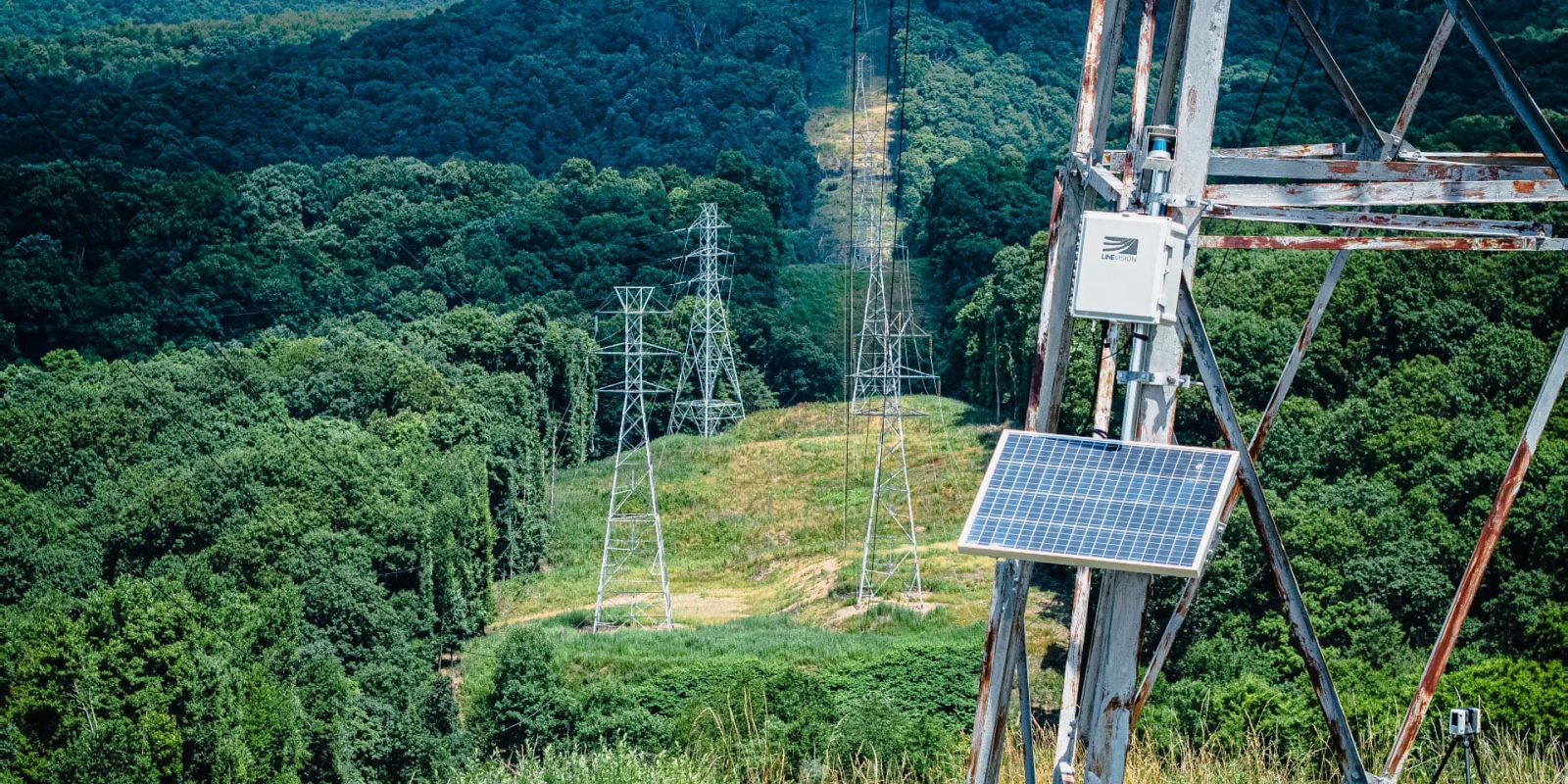
LineVision, based in Somerville, Massachusetts, provides “electric utilities with the real-time monitoring and analytics needed to accelerate the net zero grid.” Here’s how this company is playing a crucial role in helping to upgrade the US and international grids to ensure that the electrification revolution is a success.
October 20 update: National Grid announced today that it will install LineVision’s LiDAR sensors on its power lines in western New York. The sensors offer National Grid all of the data it needs to squeeze every bit of power it can out of their power lines.
This is the first time in the State of New York where LineVision’s Dynamic Line Rating technology is going to be implemented in day-to-day operations, and it’s the largest-ever expansion of the grid without physically extending the line.
Hudson Gilmer, cofounder and CEO of LineVision, said:
This project, along with five miles of circuit rebuilds, is projected to reduce curtailments by over 350 megawatts while increasing capacity by 190 megawatts. We will, in essence, have added enough capacity to existing power lines to power some 80,000-100,000 homes.
Electrek asked Rodica Donaldson, senior director of transmission analytics at EDF Renewables, which was awarded three contracts totaling 1 GW of solar and storage in New York in June, what she thinks about this announcement. She replied:
Transmission limitations resulting in congestion and curtailment for renewable projects are a material concern in many areas of the country. These issues will only get exacerbated in the future, absent new transmission infrastructure and deployment of grid enhancing technologies like Line Vision’s.
With one of the largest clean energy pipelines in New York with 1,500 MW of clean energy projects under NYSERDA contract, EDF Renewables is pleased to see this type of partnership that enables a more effective utilization of the grid and improves the ability to deliver zero-cost renewables to load.
To explain exactly what LineVision does in layman’s terms, it’s easiest to describe it in road traffic terms, as its CEO, Hudson Gilmer, put to me in a video chat. If the electrical grid is like a network of roads, then LineVision adds an extra lane on each road that alleviates traffic as more “cars” are put on the road, such as solar, wind, electric vehicles, and so on.
Or in actual terms, LineVision’s Grid Enhancing Technology (GETs) uses patented noncontact overhead line monitoring technology that utilizes LiDAR sensors and advanced analytics to improve the grid’s capacity, resilience, and safety. The company’s sensors collect critical information to unlock additional capacity on existing lines, provide insight into conductor health, and detect anomalies and risks.
Gilmer says that one GETs component takes around 20 minutes to install, and one needs to be installed between every two to three miles on the power lines.
The components of LineVision’s technology are made in Maine and Texas, and customers use a secure web interface to access grid analytics. As Gilmer says, “The magic happens in the algorithm.”
Gilmer pointed out that “transmission lines are currently not monitored today. Therefore utilities have to make conservative assumptions about weather. Our sensors can unlock up to 40% capacity, helping utilities to achieve more accurate capacity.”
LineVision’s technology is also capable of “situational awareness” – that’s the ability to sense risks such as wildfires, which can be caused by poorly maintained conductors. The company has also developed an application that detects ice on the line, which it picks up when it senses line movement due to the ice’s weight.
And the US grid needs all the capacity it can get: Gilmer noted that in order to accommodate the electrification that the Inflation Reduction Act (IRA) is going to spur on, grid capacity in the US will need to double by 2035 and triple by 2050.
LineVision’s technology is already being used in real time by utilities such as National Grid, Dominion Energy, Xcel Energy, Tennessee Valley Authority, Duquesne Light Company (pictured above), NYPA, SMUD, multiple Exelon companies, and several other North American utilities. It also works with utilities across eight European countries, Marubeni, and other EPCOs in Japan, and Oceania.
And seeing how the Federal Energy Regulatory Commission (FERC) passed order 881 in December, which requires all transmission providers to improve “both the accuracy and transparency of transmission line ratings,” the regulatory tailwinds for grid improvement are now strong.
LineVision today announced the closing of its $33 million Series C financing round, which moves it from the early stage to the growth stage, and the company will use the money to accelerate global growth.
The round is led by Climate Innovation Capital and co-led by S2G Ventures, and other new investors include the $1 billion Microsoft Climate Innovation Fund and Marubeni.
The IRA is expected to reduce emissions to 42% below 2005 levels by 2030. Gilmer rightly observes, “The IRA has significant incentives, but it does nothing to solve the grid capacity’s increased demand. Transmission is the critical link.”
Photo: LineVision
Read more: US, UK, other G7 countries to ‘predominantly decarbonize electricity sectors by 2035’
UnderstandSolar is a free service that links you to top-rated solar installers in your region for personalized solar estimates. Tesla now offers price matching, so it’s important to shop for the best quotes. Click here to learn more and get your quotes. — *ad.
FTC: We use income earning auto affiliate links. More.






Comments